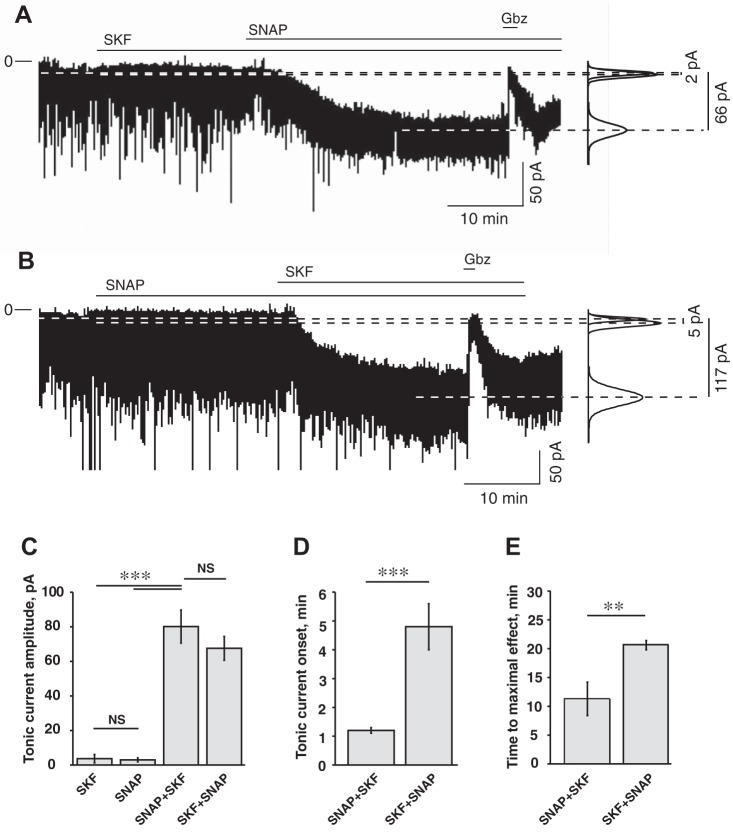Fig. 5.
Parameters of the tonic current recorded from SCN neurons depended on the sequence of application of GAT1 and GAT3 inhibitors. A: GAT1 inhibitor SKF-89976A (SKF; 100 µM) was applied before GAT3 inhibitor SNAP-5114 (SNAP; 100 µM). Horizontal lines over the recording mark the time of drug application. SKF alone produced minor changes from the baseline. Simultaneous inhibition of both GAT1 and GAT3 induced a strong GABAAR-mediated inward tonic current inhibited by gabazine (Gbz; 10 µM). At right, Gaussian fits to all-points histograms derived from the last 120 s of the recording periods (control, SKF, and SKF+SNAP). The changes of the magnitude of the tonic current are denoted by dashed lines, and the differences between the Gaussian means are shown. B: SNAP was applied before SKF. SNAP produced minor changes from the baseline. Subsequent application of SKF activated a significant inward tonic current. C: tonic current (pA) during application of SKF (n = 12) and SNAP (n = 10) alone and significant changes of tonic current amplitude during application of GAT inhibitors in sequence: SNAP+SKF (n = 9) and SKF+SNAP (n = 10), 100 µM each. D: onset time of the tonic current during sequential application of GAT inhibitors. E: the time required to achieve the maximal tonic response during sequential application of GAT inhibitors. Data were analyzed by one-way ANOVA. **P < 0.01; ***P < 0.001, NS, nonsignificant changes. Thus, when the complementary transporter was blocked, inhibition of GAT1 induced the tonic current much faster (the onset time and time to maximal effect were shorter) than GAT3. The rest of the notations are the same as in Fig. 3.

